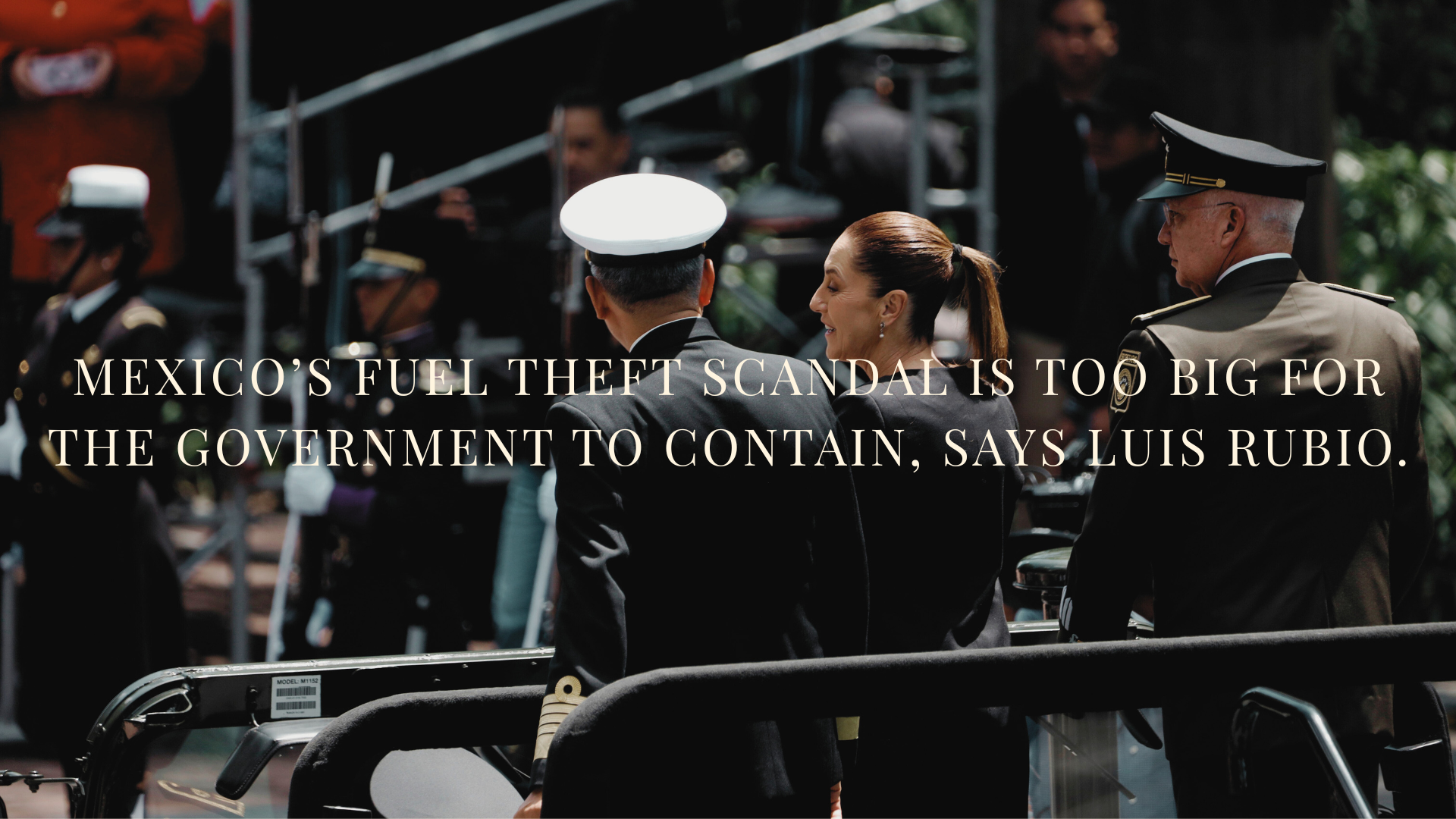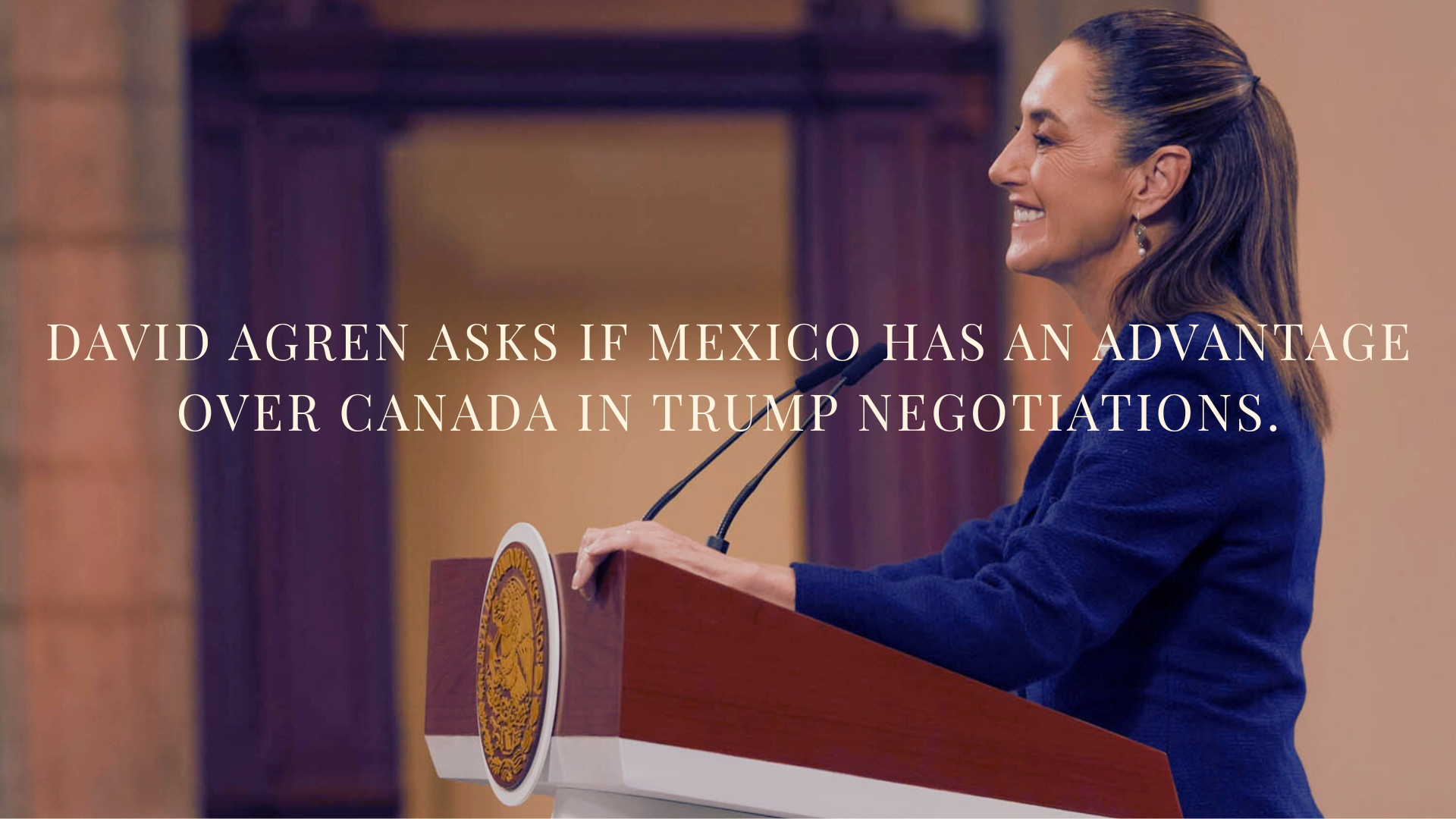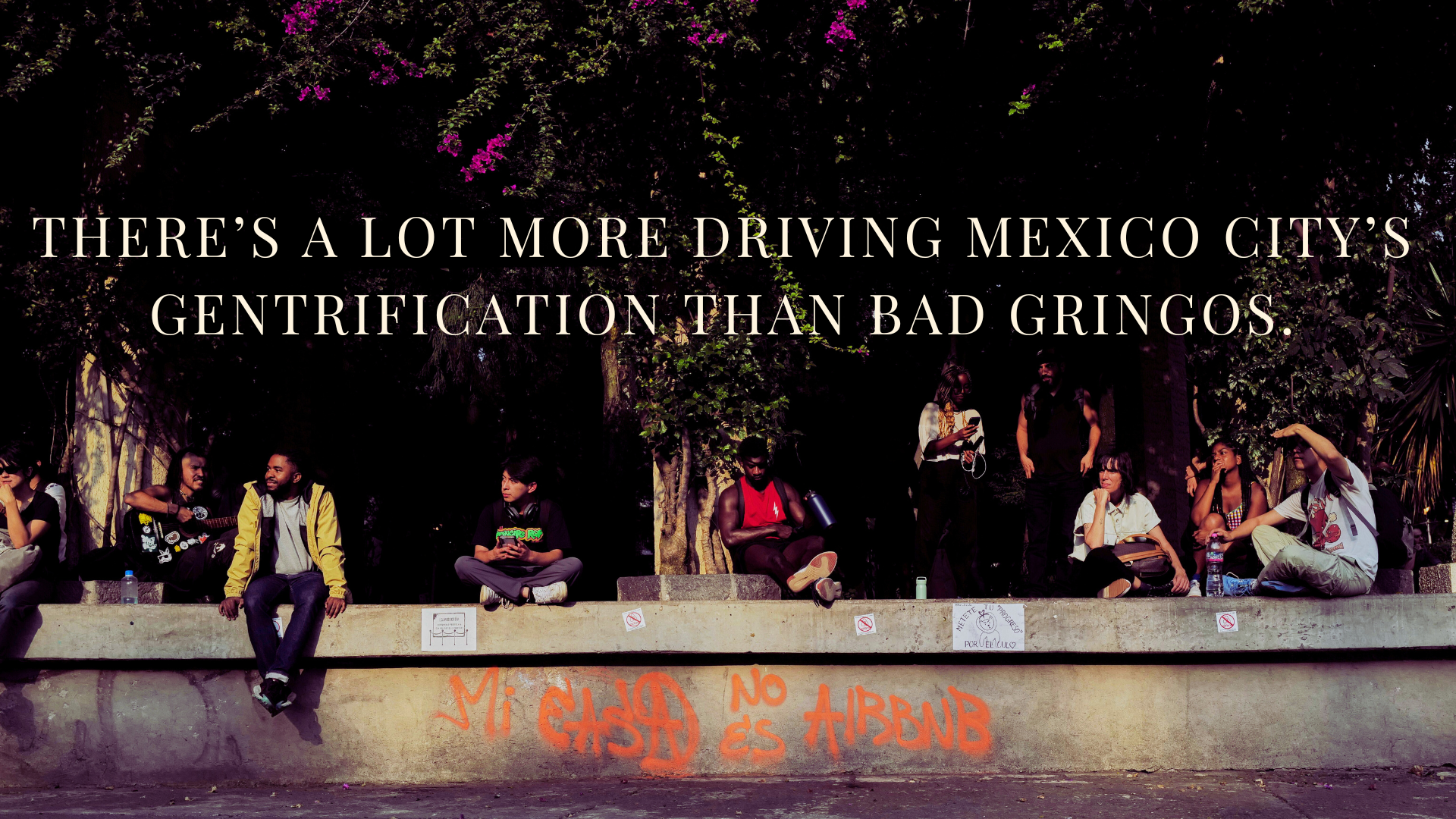
Despite talk of historic cooperation, the divide between Mexico City & DC is deepening
by Luis Rubio, political analyst and Chair of México Evalúa.
Mexico City and Washington are the capitals of two neighboring nations whose interactions are among the most dynamic and complex in the world — yet whose leaderships could hardly be more distant or contrasting. Both countries are about to begin negotiations to review their existing trade agreement, but their perspectives are so different that, if current trends continue, it is hard to imagine a successful outcome.
For nearly two centuries, Mexico and the United States maintained a relationship that fluctuated between closeness and distance, conflict and limited cooperation. The border evolved significantly over time—most notably through Texas’s independence and the U.S. invasion of 1847 — while the Mexican Revolution of 1910 further strained relations as Mexico sought U.S. recognition of the new revolutionary regime. The relationship was functional but tense, full of ups and downs.
In the 1980s, Mexico decided…

Sheinbaum at one year: A ‘complex’ operator emerges
by David Agren, writer-at-large.
President Claudia Sheinbaum swore the oath of office one year ago in a ceremony laden with symbolism as she became Mexico’s first female president. Flanked by female cadets, she took the sash from Infigenia Martínez – a prominent figure on the Mexican left and trailblazer for women in Mexican politics – as lawmakers in the lower house of congress chanted, “¡Presidenta!”
She unveiled the logo for her government, featuring an Indigenous woman. She assumed the presidency with a crushing electoral mandate, capturing more than 60 per cent of the popular vote in the June 2024 election – the highest total since the heyday of Institutional Revolutionary Party (PRI) rule in the 1970s.
But she arrived at the inauguration in the shadow of…


Sheinbaum’s first year has been a contradictory & muddled experiment
Around this time last year I was just arriving back in London, having traveled to Mexico for President Claudia Sheinbaum’s historic inauguration. While I encountered a handful of people already dismissive of Sheinbaum and contemptuous of her MORENA party, most I met were prepared to give the incoming president the benefit of the doubt. Many were hopeful that once in office she would prove as inspirational as the symbolism of her election promised. She had a great deal of political goodwill and capital to burn. One year on, her personal approval continues at stratospheric levels. But her consistently lower numbers on specific policy areas suggest a public aware of the tensions that mark her conflicted and contradictory first year in power.
The conventional wisdom is that on the big ticket items of trade and security Sheinbaum has scored some wins. Her management of the U.S.–Mexico relationship has been cautious but effective. With Donald Trump back in the White House, Mexico’s northern border could have become an economic choke point. Instead, Sheinbaum prioritized the survival of the USMCA, resisting confrontation and avoiding the rhetorical skirmishes her predecessor seemed to relish. In doing so, she not only kept U.S. trade threats at bay but also drew Canada closer as a quiet ally. Marcelo Ebrard has played the role of economic diplomat in chief, constantly negotiating with Washington, reinforcing Mexico’s stance as a stable partner in an era of volatile politics.
Yet a sizeable…

Mexico’s fuel theft scandal is too big for the government to contain
by Luis Rubio.
Gasoline theft is nothing new in Mexico. One need only recall the 1992 Guadalajara explosion, triggered by stolen gasoline dumped into the city’s drainage system after traffickers failed to sell their cargo during Holy Week. That was just the beginning, in fact, child’s play. Since then, two factors have changed: first, the sheer scale of the stolen-fuel market; and second, the deep entanglement between organized crime and government officials. The central question now is whether the sheer magnitude of this scandal—both in financial terms and in the corruption it exposes—will have significant political consequences.
Today, fuel theft in Mexico takes three forms. The first is the direct siphoning of gasoline from Pemex pipelines, most notably in Guanajuato, a hub crisscrossed by pipelines. The second is crude oil theft, followed by clandestine refining. The third, and most lucrative, is so-called tax-huachicol: gasoline imported but disguised on paper as crude oil to avoid paying taxes. A variation of this scheme involves exporting illegally refined gasoline to the United States, also tax-free, a trade with quite different, in fact geopolitical, implications, beyond the obvious criminal ones.
Illegal fuel sales have…

Does Mexico have a bargaining advantage over Canada?
Mexico expelled 26 narco bosses to the United States on Wednesday, responding to the Trump administration to crack down on drug cartels. Among those expelled were Servando Gómez Martínez, “La Tuta,” a former mouthpiece for La Familia Michoacana.
It resembled a similar expulsion of 29 narco bosses – including Rafael Caro Quintero, a man long sought by the Drug Enforcement Administration for the 1985 killing of agent Enrique (Kiki) Camarena.
President Claudia Sheinbaum defended handing over the capos as “sovereign decisions” and stating, “The decision is for our country’s security.”
The expulsions followed revelations in The New York Times that U.S. President Donald Trump quietly signed a directive allowing the use of military force against terror organizations in the Western Hemisphere. Those terror organizations include Mexican drug cartels.
Sheinbaum immediately responded…

The roots and costs of Mexico’s vast informal economy
by Macario Schettino.
For some time now, there has been a belief that previous generations lived better than today's. Many young people, for example, complain that they cannot afford to buy a home in a central location, as their parents or grandparents did. In the United States, there is nostalgia for the 1950s — a nostalgia that, as always, erases the negative parts, such as racism and discrimination against women, among other things.
In Mexico’s case, this nostalgia was fed in classrooms when emphasis was placed on something called the “Mexican economic miracle,” or by its local name: desarrollo estabilizador (stabilizing development). The story goes that from 1946 to 1971, Mexico achieved very high growth rates (6% annually, 3% in per capita GDP), and nostalgia paints a picture of orderly, clean cities with abundant jobs.
As with all legends, there’s some truth — but not too much. In Mexico, during the time being referred to, the country was still essentially rural. It wasn’t until 1960 that half the population lived in cities, and it was precisely that process of urbanization that began to complicate everything. Cities could not expand their infrastructure at the same rate as the population was growing, and even less so when the demographic growth rate exceeded 3% annually. By the 1970s, medium and large cities in Mexico already had belts of poverty and “lost cities”: towns swallowed up by urban expansion.
If in the 1960s it seemed like there were jobs for everyone, it was because only half the population lived in urban areas. As that urban population grew, the myth of full employment began to fade. To prevent this urban growth from spinning out of control, Mexico took on excessive external debt in the 1970s — just as all Latin American countries did — taking advantage of abundant petrodollars and the end of restrictions on international capital flows. In 1981, with anti-inflationary programs in the US and UK, everything collapsed.
Since then…

There’s a lot more driving Mexico City’s gentrification than bad gringos
by David Agren.
The acerbic signs and graffiti criticizing gentrification in Mexico City’s fashionable neighbourhoods were certain to capture international attention.
“Spanish is spoken here,” “Mexico for Mexicans,” and, “Go home,” read three of the screeds.
Social media couldn’t get enough of the disorderly protests – with the familiar masked vandals infiltrating yet another march and smashing up storefronts. The Mexico City police were curiously absent. An easy narrative of Americans abroad wearing out their welcome, while ICE cruelly rounded up Mexican migrants in cities such as Los Angeles.
The Department of Homeland Security jumped in with its own snark, posting, “Oh,” above an X Post with protester graffitiing the words, “Not your home,” and a protester waving a sign in English admonishing, “Pay taxes, learn Spanish, respect my culture.
Much of the international media, meanwhile, focused on the core matter of gentrification, which has spread through leafy neighbourhoods such as Roma, Condesa and Juárez – among others – over the past 15 years, driving up rents and forcing some long-term residents to move as their homes became short-term rentals.
The easy hook for any story on gentrification are…

New rules: The 4T ushers in a new age of peak power
by David Agren.
Former PRI governor Fidel Herrera passed away recently. He was remembered for a sordid administration in the late 2000s, when Los Zetas took over the state. As the discovery of a clandestine refinery in Veracruz revealed, the state-crime nexus continues – even with Morena in power since 2018, having ousted Herrera’s Institutional Revolutionary Party.
Herrera scandalized Mexico throughout his term. He won the lottery twice while in office. And he coined the trademark phrase: “Estoy ahorita en plenitud del pinche poder” – roughly translated as “I’m at the height of my f*cking power.” A less polite translation would be a confession to being drunk with power.
The line encapsulated the impunity and abuse of authority during his term in Veracruz, which was followed by the thievery of fellow príista Javier Duarte – under whom Veracruz became a cemetery for journalists.
Morena and its allies in the so-called “Fourth Transformation” (4T) have channeled Herrera’s authoritarianism in recent weeks – even longer, according to critics – as they push as a series of reforms through congress, where they hold constitutional-proof majorities.
The 16 reforms range from changing wildlife laws to ban the use of captive marine mammals in theme parks to building platforms for boosting state surveillance capacities and a measure to allow National Guard members to seek public office (despite being under National Defence Secretariat command.)


Squatters, scaremongers, and the challenge of Mexico’s ghost homes
by Madeleine Wattenbarger.
A new housing program sparked indignation across Mexico’s mainstream media this week. With the initiative, the Institute for the National Housing Fund for Workers (Infonavit) will offer refinancing plans to people who have stopped paying off their Infonavit housing loans. It will also offer a rent-to-buy plan to squatters of abandoned Infonavit homes.
Establishment media figures in Mexico decried the program’s implications for private property in Mexico. El Heraldo radio host Luis Cárdenas insisted that the judicial reform would allow Morena to seize private dwellings. Speaking in a video posted to social, Cárdenas claimed, “The head of the Infonavit will turn over your house and mine to the criminals who squatted it.” The Infonavit has said that the measure only applies to homes that are not in dispute.
Speaking on Monday, Infonavit director Octavio Romero Oropeza explained that the program is an attempt for the government to recover social housing units without resorting to mass evictions. An ongoing Infonavit census has found 25,000 abandoned houses across the country. Local governments, concerned about them becoming a locus of crime, have long requested that the Mexican state do something about the empty developments.
According to Silvia Emanuelli, the Latin America regional director of the Habitat International Coalition, the UN’s housing organization, Mexico’s abandoned homes are a result of pro-market policies reproduced across the continent in the 1990s, with the logic first applied in Chile under the Pinochet dictatorship. Those policies mandated a reduction in the state’s role in the housing market. Private companies were put in charge of building housing, and homes became merchandise.

